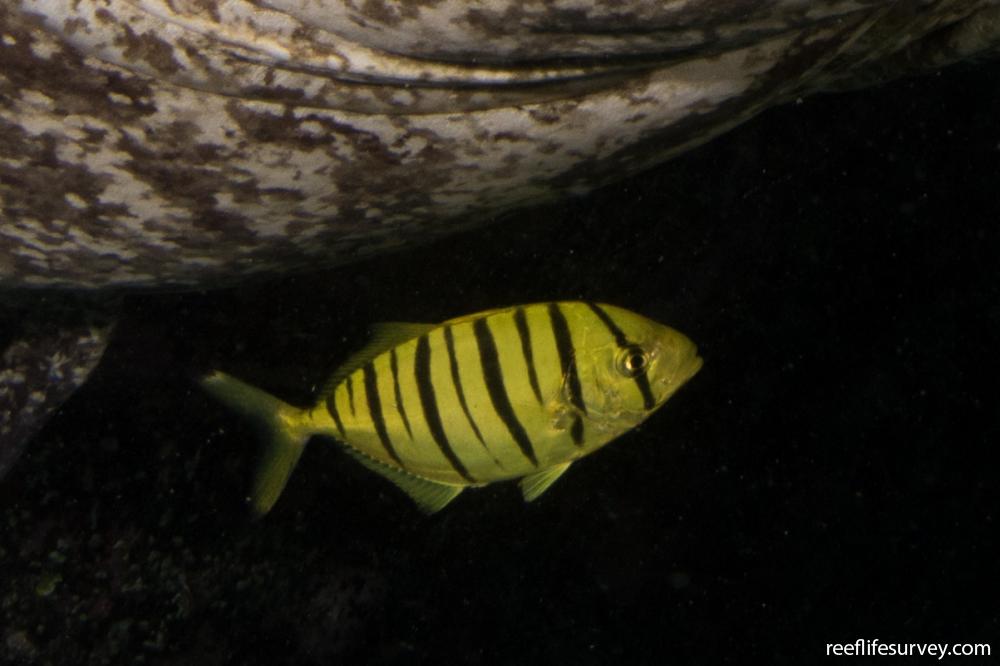Gnathanodon speciosus
Golden trevally | Banded Trevally | Golden Horsmackerel | Golden Jack | Golden Kingfish | King Trevally | Yellow Jack | Yellow UluaSimilar Species
Distribution
Tropical Eastern Pacific, Tropical Indo-Pacific
Description
Combination of five faint bars with narrower bars between, large dark spots often present, colour of bright yellow juveniles gradually fades with age. Mouth is more protrusible and 'rubbery' than other trevallies, made to pump food out of the sand. Forms large schools, often mixed with Carangoides fulvoguttatus (Turrum) which lacks vertical bars and has slightly more angular head. Juveniles school in front of sharks and other large fishes, and also can accompany divers.
Information
Max Size: 120 cm
Sea Temperature Range: 21.5-31.8°C
Depth: 0-80 m
Habitat Generalization Index: 6.95
Also referred to as the SGI (Species Generalisation Index), this describes the habitat niche breadth of the species. Species with values less than 15 are found in a relatively narrow range of reef habitat types (specialists), while those over 25 may be found on most hard substrates within their range (generalists). Learn more here.
Conservation and Rarity
IUCN Status: Not Evaluated
Occurrence: Infrequent (3.3% of sites)
Occurrence describes how often the species is found on surveys within its distribution. It is calculated as the % of reef sites surveyed by RLS divers across all the ecoregions in which the species has been observed
Abundance: Many (13 per transect)
Abundance is calculated as the average number of individuals recorded per RLS transect, where present.
Edit by: RD Stuart-Smith, GJ Edgar, AJ Green, IV Shaw. 2015. Tropical Marine Fishes of Australia. Reed New Holland












